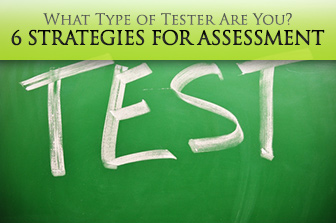12 Teacher Tips for Writing Good Test Questions


In almost any language program, at one point or another, students will have to take tests. And since most students will one day have to perform well on a TOEFL (Test of English as a Foreign Language) test or other language assessment, giving your students a chance to practice their test taking in your classroom will only help them in the future. Even so, not all tests are created equal. Different testing methods test different types of knowledge and require different test taking skills. Here are some of the most popular types of tests that ESL teachers use in their classrooms.

Multiple choice tests have been a popular choice for educators for many years. Each question gives students several options for answers, and they choose the correct answer from among the incorrect answers. Multiple choice tests are easy to grade and can cover a large range of information without taking too much time or being too overwhelming. Using these tests in your classroom may help prepare students for standardized tests. Multiple choice tests, however, may not give teachers the most accurate measure of a student’s language knowledge and may overly rely on test taking strategy. Some teachers may be tempted to use the same tests year after year, and savvy students may find less than honest ways to score high on these tests.
True/false tests, a type of alternative response tests, are another long time favorite for many different teachers. Each question presents a statement, and the student must decide whether that statement is correct or not. True/false tests are another easy grader, but again depend heavily on test taking strategy. When students must correct false statements and make them true, you may get a better measure of their overall language knowledge. These types of tests can be tricky, though. Small details can throw off even the best students, and test takers may spend much of their time second guessing their answers.
Matching tests require students to pair items in one column with those in another. Some language teachers may ask their students to match English words with those same words in their first language. Others may provide lists of places and people who go together. Matching tests can cover a large range of material and offer an easy grading experience for the teacher. When students match items for a test, they have some base information for each answer. They know that each item must coordinate with another. Perhaps this decreases test stress because even those with no knowledge of an answer have a chance to get the question correct. However, one mistake on a matching test can throw off so many answers a student has no hope of passing. When letters A, B and C just don’t jive with numbers 1, 2 and 3, a student can become paralyzed and perform even worse.
Completion tests require students to give some information to complete a sentence on the page. Completion tests might be fill in the blank tests, cloze tests, or free answer tests. Completions give students a chance to show the teacher what they know rather than testing for what they do not know. Language students can use their entire knowledge of English to come up with an answer that makes sense for each question, and these tests check how well a student can communicate rather than how much he has memorized. Completion tests may be harder on the teacher since they require more time to grade. Also, the teacher needs to have flexibility on the answers since students may not choose the exact word the teacher had in mind. Providing a word bank can help students with these types of tests, but smart teachers will give students more options than they will need to complete the test. For example, a test with 20 questions might have 30 words in the word bank. (Having an equal number of questions and answers would make this a matching test.)
Essay tests are less common in the ESL classroom since they require a larger base of general knowledge than simpler test forms. Essay tests, however, are highly communicative. Students can be creative with the language they know, and strong students will find correct ways of expressing their ideas even if they do not remember exactly what was taught in class. Essay tests can be stressful for ESL students, though. The idea of filling in a blank page can be paralyzing to students whose confidence is wavering. And beginning students may not have enough base knowledge of English to succeed with this type of test. Grading essay tests can be challenging as well. So much of essay grading is subjective, so teachers who use a rubric to grade essay tests will find their scores most objective.
Oral testing is particularly important in language classrooms because spoken language is the ultimate goal in any language program. Oral tests focus on students’ ability to communicate with what they know. Since spoken language is creative and flexible, students may find that oral testing gives them opportunities to self correct, ask for clarification and use language creatively. A one on one interview, though, can be intimidating, especially for shy students. Those that are quiet in class can find the pressure of a private conversation with their teacher enough to throw their performance on the exam. Teachers, on the other hand, may appreciate the opportunity to hear students who choose not to speak on a daily basis in class. Grading oral tests can be more subjective or more objective depending on how the test is structured.
By doing so, they decrease the influence of the test itself and really get to the heart of their students’ knowledge.
What testing method do you use most often?